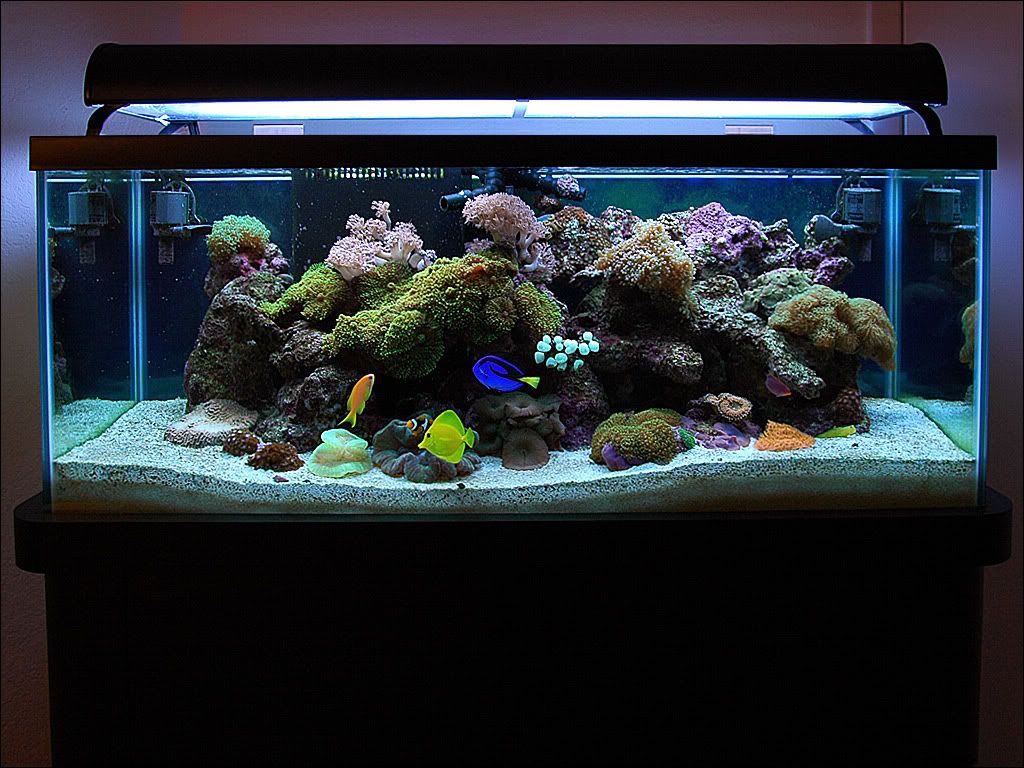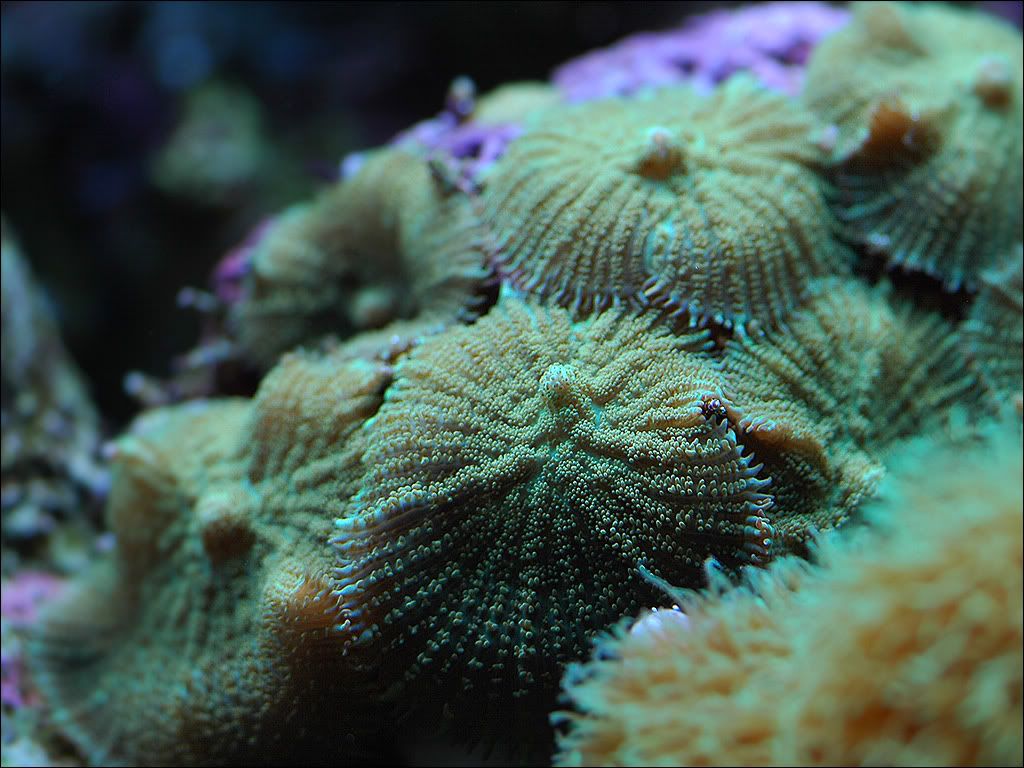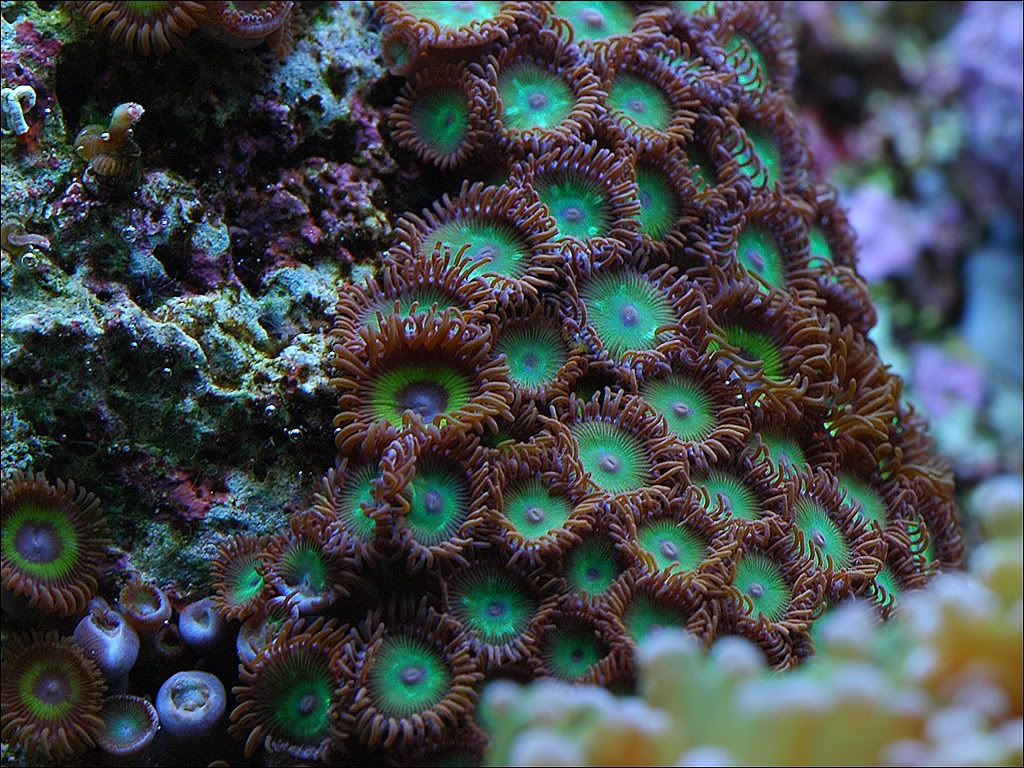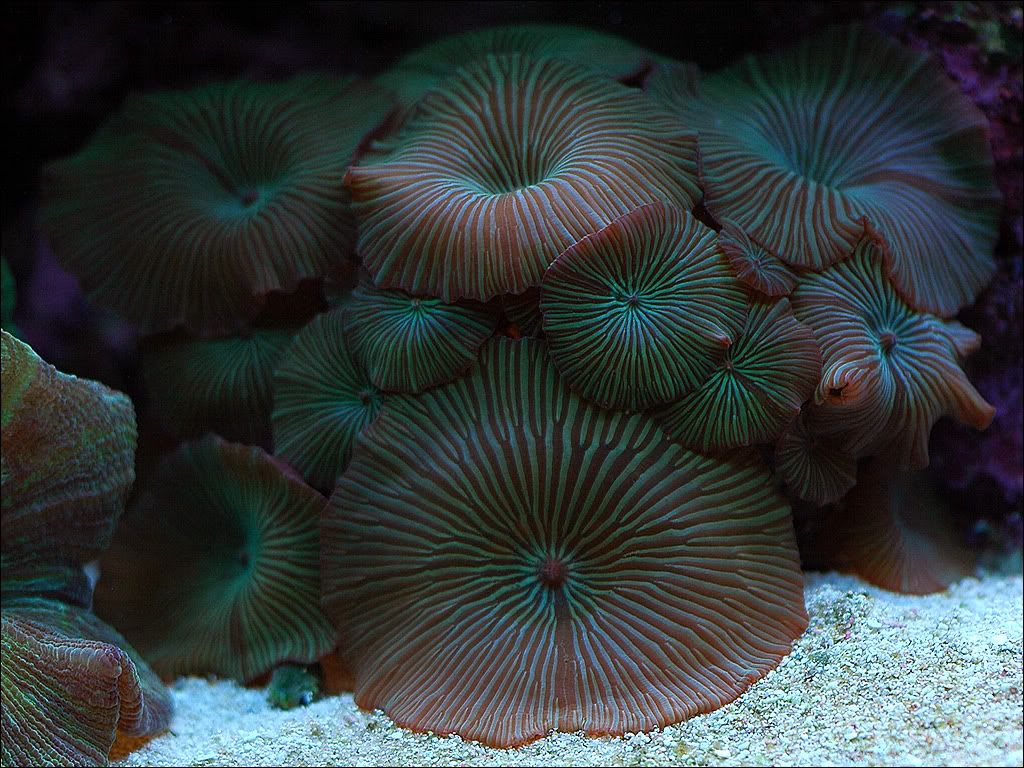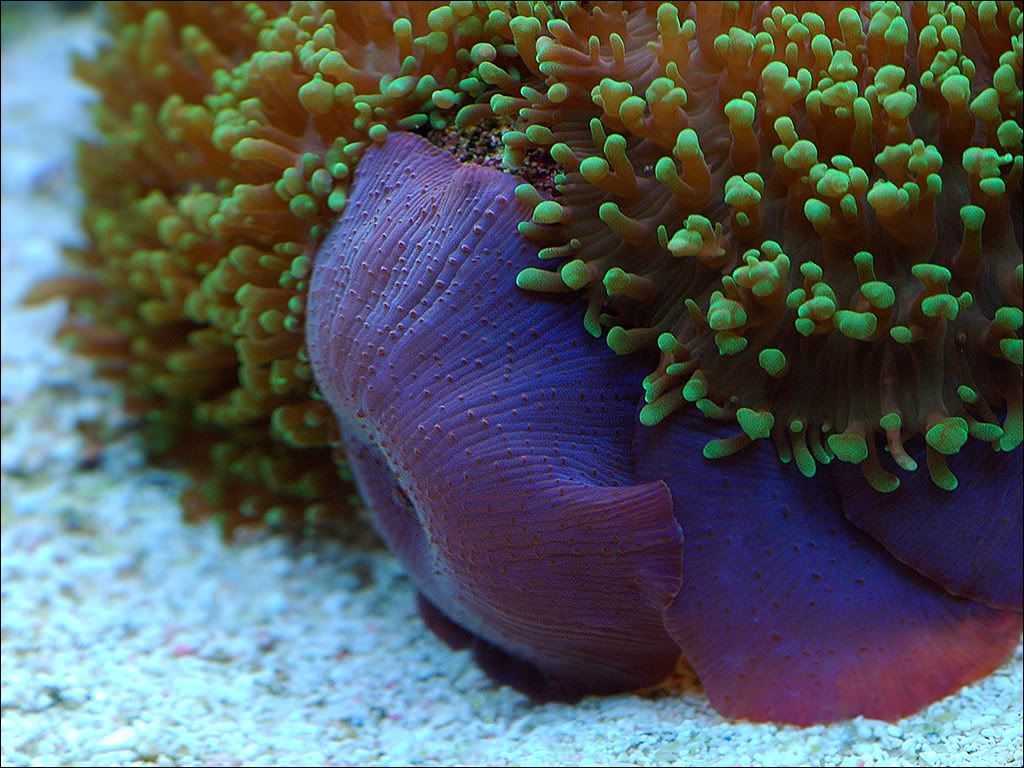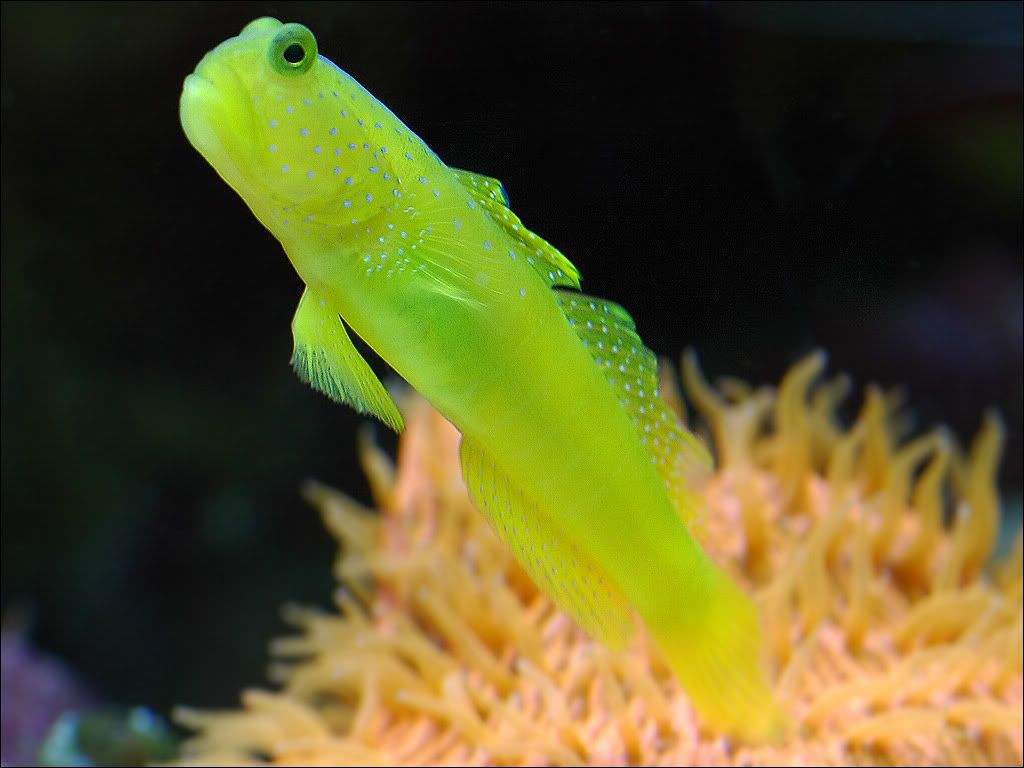New Setup - AGA 75 Gallon Pre-Drilled
- Thread starter aromano
- Start date
Sorry andre...I hope you found them. I always forget the link.
Jesse
ps...here it is if anyone is interested, they are called Clear PVC Swing Check Valves... http://www.marinedepot.com/aquarium_plu ... valves.asp
Jesse
ps...here it is if anyone is interested, they are called Clear PVC Swing Check Valves... http://www.marinedepot.com/aquarium_plu ... valves.asp
mikeguerrero
Active Member
I saw them at Home Depot. They are only like 4 dollars and come in all sizes.
Mike
Mike
rmanecke
New Member
Andre, great post.
If you and Mike are the first two ships heading out into the hurricaine, I am the dingy #3 following you two. Your information is helping me tremendously.
One question, I am using photobucket.... did you upgrade your acccount to post such richly detailed pics? Also, what is your photography setup? SLR? Tripod? Lenses?
Thanks!
R
If you and Mike are the first two ships heading out into the hurricaine, I am the dingy #3 following you two. Your information is helping me tremendously.
One question, I am using photobucket.... did you upgrade your acccount to post such richly detailed pics? Also, what is your photography setup? SLR? Tripod? Lenses?
Thanks!
R
mikeguerrero
Active Member
Andre has great photography skills because he cheats, hehehe, he alters photos and makes them look better than they really are, didn't you see what he did to my photo?
He is by profession a graphic designer; and a good one at that....
MG
He is by profession a graphic designer; and a good one at that....
MG
aromano
New Member
Thanks a lot for the tips and links for the check valve guys. :thumbup:reefman23 said:They ones at HD arent swing check valves and are spring-loaded flaps instead. These would probably add a lot to the head loss.
The ones designed for fish tanks are swings which add little resistance.
Jesse
I definitely need it and will look into getting one this week.
Rmanecke,rmanecke said:One question, I am using photobucket.... did you upgrade your acccount to post such richly detailed pics? Also, what is your photography setup? SLR? Tripod? Lenses?
Thanks!
R
I'm glad to hear that you liked the thread, and that it could help you, and give you some reference of how this tank has been evolving from the beginning.
Yes, I had to upgrade my account with photobucket in order to upload larger images to their server.
I use a DSLR Nikon D70S with a Nikkor 18 - 200mm VR lens. I always shoot in manual mode, with and without a tripod depending on what shutter speed and aperture needs to be used to get a good exposure. I prefer to capture in RAW format and process afterwards: It allows much more dynamic range and the possibility of much better image quality.
Mike,mikeguerrero said:Andre has great photography skills because he cheats, hehehe, he alters photos and makes them look better than they really are, didn't you see what he did to my photo?
He is by profession a graphic designer; and a good one at that....
MG
With that comp where I merged your photo with that drawing, I could use my graphic design skills in a more creative way to express a quick a comic joke.
On the other hand, with photography post processing can only compensate to some degree for error: exposure errors, focusing errors, color balance errors, composition errors, shooting motion errors, possibly some other errors. But with a good lenses, and best shooting technique, you do not need to do post processing.
It’s all about getting that perfect exposure, and I find that the more I do my job before I press the button, the less I need to post-process. If I've done my job right, most photos don't need any post-processing at all. However, that doesn't mean that some photos can't benefit from post work.
The right equipment just makes it easier, faster or more convenient for you to get the results you need, but IMO the equipment does not really affect the quality of your image.
It’s nothing but a matter of seeing, thinking, and interest. That’s what makes a good photograph. And then rejecting anything that would be bad for the composition. The wrong light, the wrong background, time and so on.
People always ask me what camera I use. It's not the camera...
The camera doesn't make a bit of difference. Just about any camera, regardless of how good or bad it is, can be used to create outstanding photographs.
All of them can record what you are seeing. But, you have to SEE. ;-)
P.S. Notice the difference between these two exposures for example.
The image on the left was taken in a hurry, with a flash where the bright white light kills the shadows, creating reflection, and a consistent light effect through out the whole image.
No matter how much post processing can be done here, the wrong light and exposure will never allow it to be a composition.
The image on the right is not necessarily good either, but it's better. The picture was taken without a flash, with a longer shutter speed and larger aperture. The final exposure has a nicer natural shadow effect, along with a range of cool colors tones reflecting from the tank's light on the upper left hand corner, creating a complementary balance with the warm light created from the sump light. That allows for a better composition, even though the photograph is a bit under exposed.
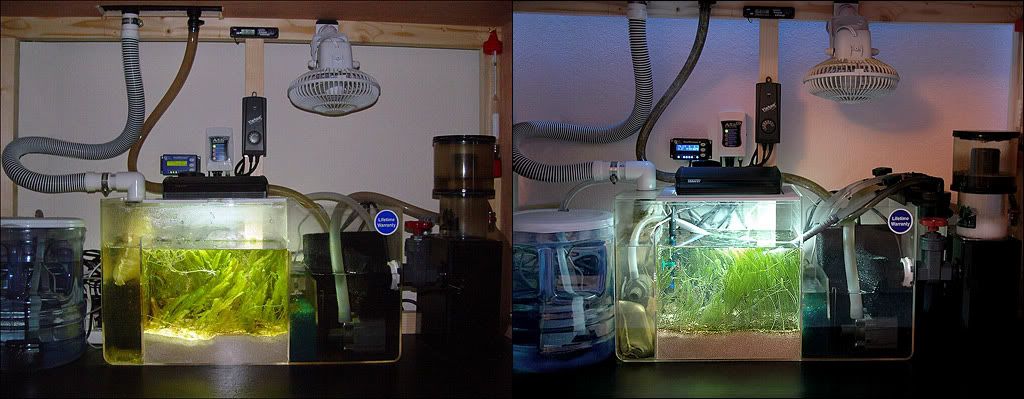
rmanecke
New Member
Your picture reminds me of a question I have wanted to ask you and Mike.
How is your ATO working? What type of pump do you have attached to it?
I have the same JBL ATO unit, in single sensor mode, using an aquamedic peristaltic pump. Lately, the unit seems to fail...
More specifically, the "over time" "safety shut off" is activated. Any problems with yours?
How is your ATO working? What type of pump do you have attached to it?
I have the same JBL ATO unit, in single sensor mode, using an aquamedic peristaltic pump. Lately, the unit seems to fail...
More specifically, the "over time" "safety shut off" is activated. Any problems with yours?
Moorish_Idol
New Member
:shock: :shock:
aromano
New Member
Rmanecke,
Thanks a lot for your comments.
I really appreciate it!
I use a Rio 180 with my ATO, with a dual sensor mode, and so far I've never experienced any safety shut off failure issues. Yes I've seen the safety shut off activated when my reservoir water level is below the sensor level, but that is a nice feature, so the pump won't run dry in case I'm not home to fill the reservoir.
I have the unit installed for about three months now, so it’s hard to say in the long run how reliable they really are, but so far I’ve been extremely happy the JBJ ATO results.
Thanks a lot for your comments.
I really appreciate it!
I use a Rio 180 with my ATO, with a dual sensor mode, and so far I've never experienced any safety shut off failure issues. Yes I've seen the safety shut off activated when my reservoir water level is below the sensor level, but that is a nice feature, so the pump won't run dry in case I'm not home to fill the reservoir.
I have the unit installed for about three months now, so it’s hard to say in the long run how reliable they really are, but so far I’ve been extremely happy the JBJ ATO results.
rmanecke
New Member
In the single sensor mode... there is one sensor in the sump. When the float sinks, the pump turns on and fluid drips back in until the water level rises. When the float switch rises, the pump shuts off. Since I have no pump in the resevior, nothting will burn up if it runs dry.
So far...
I tried switching out the float. Same problem. I think that the peristaltic pump can't pump fast enough at times to raise the water level before the time limit runs out. I even adjusted the time limit to the max (14 minutes). I do notice that sometimes the tubing fills with air and it takes a long time to prime before water starts going through.
I will try hooking up to an impellor type of pump tonight. With a submerged pump, I will use the two sensor mode with sensor two in the resevior. I will review the instructions to make sure this is the correct way for me to setup... it sounds like that is how you are doing it.
R
So far...
I tried switching out the float. Same problem. I think that the peristaltic pump can't pump fast enough at times to raise the water level before the time limit runs out. I even adjusted the time limit to the max (14 minutes). I do notice that sometimes the tubing fills with air and it takes a long time to prime before water starts going through.
I will try hooking up to an impellor type of pump tonight. With a submerged pump, I will use the two sensor mode with sensor two in the resevior. I will review the instructions to make sure this is the correct way for me to setup... it sounds like that is how you are doing it.
R
I am using the Tsunami Auto Topoff connected to an extra MiniJet 404 I had laying around. I used a piece of tubing that just fit over the end of the 404, this also happened to be the same size as the threads on a John Guest male adapter to which I connected a piece of RO tubing to that serves as my fill line for the sump. I think you are correct in your assumption about the peristalic pump being too slow to refill the sump before the ATO times out.
mikeguerrero
Active Member
I use the Rio 90 as my pump for the JBJ top off. It works great and refills my sump very quickly.
rmanecke
New Member
OK, I hooked it up to a little giant 350 gph (that I had lying around) pump in two sensor mode (a)... that ought to be enough!
Seems to work well. It will certainly test the inadequate pump theory! I will downsize to a smaller pump with I have the time.
Thanks for the tips... I thought everyone did this with peristaltic pumps (silly assumption).
I will keep you posted!
R
Seems to work well. It will certainly test the inadequate pump theory! I will downsize to a smaller pump with I have the time.
Thanks for the tips... I thought everyone did this with peristaltic pumps (silly assumption).
I will keep you posted!
R
aromano
New Member
Rmanecke,rmanecke said:SUCCESS!
OK, changing over to the bigger pump fixed the problem. I was even gone this weekend and it worked perfectly. Thanks!
OK Andre... enough hijacking of your thread with my ATO problem. LETS SEE SOME MORE PICTURES OF YOUR AWESOME TANK!
I'm glad to hear that the pump upgrade fixed the problem with the ATO. Don't worry about hijacking my thread
That's what they are made for, so we can learn, exchange ideas and of course, for entertainment with some cool picts every once in a while.
Here are some that were taken today... ;-)
